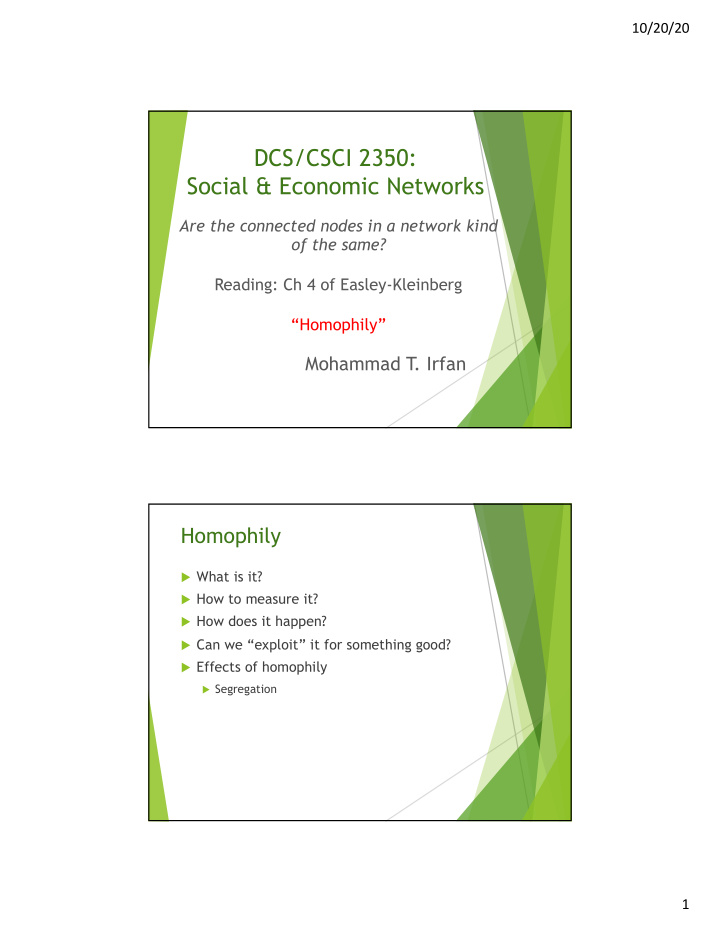



10/20/20 DCS/CSCI 2350: Social & Economic Networks Are the connected nodes in a network kind of the same? Reading: Ch 4 of Easley-Kleinberg “Homophily” Mohammad T . Irfan Homophily u What is it? u How to measure it? u How does it happen? u Can we “exploit” it for something good? u Effects of homophily u Segregation 1
10/20/20 What is homophily? u Principle that "We are like our friends" u Age u Place of living u Occupation u Income u Interests u Beliefs u Opinions u Homophily illustrates how the surrounding context can drive link formations in a network u Intrinsic vs. contextual How to measure homophily? 2
10/20/20 Middle and high school friendship How does homophily happen? Mechanisms of homophily 1. Selection 2. Social influence 3
10/20/20 Interplay: selection v. social influence in Wikipedia u Crandall et al. (2008) Similarity score = # articles edited by both A AND B / #… edited by A OR B Misconception u In a network, friends share a lot of common characteristics (e.g., drug usage). Changing the behavior of a few nodes will influence many other nodes to change as well. u Cohen & Kandel (1977)– teenage drug usage 4
10/20/20 Other topics on context in network u Affiliation network Can we “use” homophily for something good? 5
10/20/20 Christakis & Fowler (2007): Obesity Strong evidence of social influence in 32 years of data 6
10/20/20 Christakis & Fowler (2008) Social network among smokers (yellow) and non-smokers 7
10/20/20 Effects of homophily Residential segregation 8
10/20/20 https://www.chicagoreader.com/chicago/still-separate-unequal-and-ignored/Content?oid=16347785 Residential segregation Bayside Jamaica New York (Eric Fischer, 2010) 9
10/20/20 Schelling’s model (1970s) Threshold = 3 Thomas Schelling Nobel Prize (2005) Misconception u People move because they want to be majority u Correct: They want to avoid being extreme minorities 10
10/20/20 Locations Chan, Irfan, Cuong (AAMAS 2019) u Game-theoretic view of Schelling’s models u Structure u Two networks u Multiple agents in the same location u Locations have capacity u Behavior u Social network influence Agents u Location effect Simulation u NetLogo u File à Models Library à Social Science à Segregation 11
Recommend
More recommend